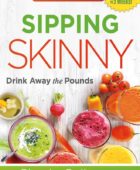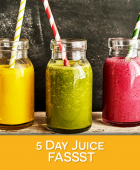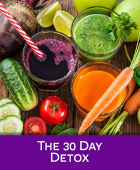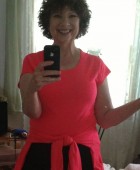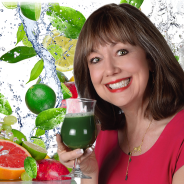Scary Cereal
One of my Jumpstart Fall Healthy and Fit For Life group members posted this on Facebook today from another post she found: “Had to take Harper to the doctor’s today. I had no clue what gave her this rash until Steve told me that she had Applejacks cereal for the first time this morning. Poor girl! I did some research on it and this is what I found: Apple Jacks has the most popular food dyes known to cause behavioral problems in children; yellow 6, blue 1, red 40 and BHT. These food dyes are now illegal in Europe, but perfectly acceptable in America. BHT is a common stabilizer in pesticides, gasoline, lubricants, and soaps, but are also found in Apple Jacks [cereal]. Yellow 6 has been linked to tumors in lab mice and red 40 has been known to cause severe allergic reactions.” The picture of the child’s rash looked horrific.
I did my own research about the cereal and its ingredients after reading this. Indeed, there is red, yellow, and blue dye in Apple Jacks cereal. But this isn’t the only cereal with dyes. We have to read all labels. Here are the ingredients of Apple Jacks:
Sugar, whole grain corn flour, wheat flour, whole grain oat flour, oat fiber, soluble corn fiber, contains 2% or less of salt, milled corn, dried apples, apple juice concentrate, cornstarch, cinnamon, modified corn starch, yellow 6, baking soda, turmeric color, blue 1, natural and artificial flavor, red 40, bht for freshness. vitamins and minerals: vitamin c (sodium ascorbate and ascorbic acid), niacinamide, reduced iron, zinc oxide, vitamin b6 (pyridoxine hydrochloride), vitamin b2 (riboflavin), vitamin b1 (thiamin hydrochloride), vitamin a palmitate, folic acid, vitamin d, vitamin b12.
Health Problems that result from dyes include cancer, ADHD, allergies, and rashes. As you read through the various dyes, note how many appear in dog food. This is why it’s important to read labels, even our dog food. No wonder so many dogs get terrible diseases. I make my own dog food for Annie Mae. And when it comes to cereal, the best ones to serve are the ones you make yourself.
According to Dr. Mercola, there are numerous dangers resulting from various dyes. Food dyes are among the most widely used and dangerous additives. While the European Union has recently placed regulations on labeling food dyes to inform consumers of the health risks, the United States has no such requirement.
Here are some of the most common food dyes used today, according to the Food Freedom Network:
- Blue #1 (Brilliant Blue) An unpublished study suggested the possibility that Blue 1 caused kidney tumors in mice. Products that contain it: Baked goods, beverages, desert powders, candies, cereal, drugs, and other products.
- Blue #2 (Indigo Carmine) Causes a statistically significant incidence of tumors, particularly brain gliomas, in male rats. Products containing it: Colored beverages, candies, pet food, & other food and drugs.
- Citrus Red #2 It’s toxic to rodents at modest levels and caused tumors of the urinary bladder and possibly other organs. Products containing it: Skins of Florida oranges.
- Green #3 (Fast Green) Caused significant increases in bladder and testes tumors in male rats. Products containing it: Drugs, personal care products, cosmetic products except in eye area, candies, beverages, ice cream, sorbet, ingested drugs, lipsticks, and externally applied cosmetics.
- Red #3 (Erythrosine) Recognized in 1990 by the FDA as a thyroid carcinogen in animals. It is banned in cosmetics and externally applied drugs. Products containing it: Sausage casings, oral medication, maraschino cherries, baked goods, and candies.
- Red #40 (Allura Red) This is the most-widely used and consumed dye. It may accelerate the appearance of immune system tumors in mice. It also causes hypersensitivity (allergy-like) reactions in some consumers and might trigger hyperactivity in children. Products containing it: Beverages, bakery goods, dessert powders, candies, cereals, foods, drugs, and cosmetics.
- Yellow #5 (Tartrazine) Yellow 5 causes sometimes-severe hypersensitivity reactions and might trigger hyperactivity and other behavioral effects in children Products containing it: Pet foods, numerous bakery goods, beverages, dessert powders, candies, cereals, gelatin desserts, and many other foods, as well as pharmaceuticals and cosmetics.
- Yellow #6 (Sunset Yellow) Caused adrenal tumors in animals and occasionally causes severe hypersensitivity reactions. Products containing it: Color bakery goods, cereals, beverages, dessert powders, candies, gelatin deserts, sausage, cosmetics, and drugs.
Every year, food manufacturers pour 15 million pounds of artificial food dyes into U.S. foods — and that amount only factors in eight different varieties, according to the Center for Science in the Public Interest (CSPI).
For more information, see http://articles.mercola.com/sites/articles/archive/2011/02/24/are-you-or-your-family-eating-toxic-food-dyes.aspx




